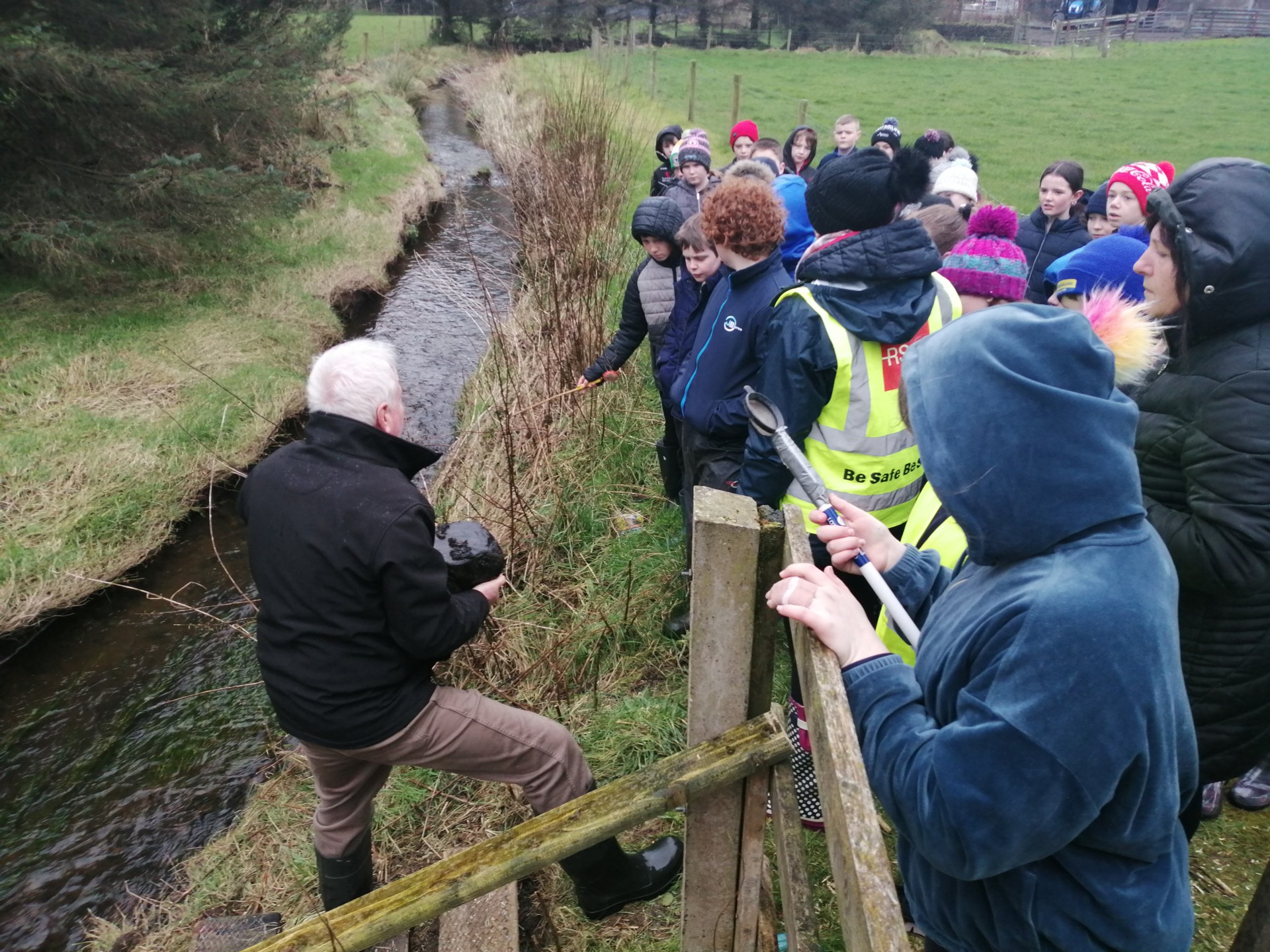THE Ballinderry River Trust has partnered up with St Mary’s PS in Dunamore for a project which they hope will help build a relationship between young people and their local waterway, helping to guarantee a healthier future for the river.
In March of this year, the Ballinderry suffered a major ecological catastrophe when 400,000 gallons of slurry entered one of its tributaries – the small Claggan River – with some estimating as much as 18-miles of habitat had been adversely impacted, right down to the mouth of Lough Neagh.
The project is a response to this latest devastating spill, and, as part of the project, present custodians of the river (members of the Ballinderry River Trust) have been leading their successors (the St Mary’s pupils) on educational expeditions to the banks of the Ballinderry.
Speaking to the Dungannon Herald, Frank Mitchell who is the conservation officer with the Ballinderry River Trust said, “We recognise that only when local people are well-informed and care about the Ballinderry River, they in turn will secure the future of this valuable habitat.”
This logic led them to approaching the local primary school. It turned out Ms Jane-Marie Mallon – P7 teacher with St Mary’s Dunamore – was interested in using the Ballinderry River as an outdoor learning resource for the curriculum.
She told the Dungannon Herald, “After some planning meetings with staff of the Ballinderry River Trust we realised we could use the Ballinderry River to help teach maths, geography, history, biology and science.
“These are dry subjects, but when we can link the subjects to local farming and fishing, it is great fun, and does not feel like schoolwork.”
A mutually beneficial relationship has since blossomed. The children are studying traditional subjects in a more engaging way, while also forming a knowledge and appreciation that will help the next generation look after the Ballinderry.
“We started with ‘Fish in the Classroom’,” said Ms Mallon, “where the children looked after 50 Dollaghan (native brown trout) eggs.
“The children looked after the fish eggs, allowed them to hatch and, when they were ready, released them back into the river,” said Ms Mallon.
Other avenues of learning opened up on these trips to the river, including water cycles, maths and data handling, as well core ideas about ecosystems and food webs.
Ms Mallon said, “The children realised that the lives of their Dollaghan Trout eggs depends on plants and invertebrates found in a healthy pollution-free river. The children studied poems written about rivers and took a walk along the Ballinderry River recording all the sights, smells and feel of plants and trees along the route. The children then used their observations for creative writing and poetry.”
The project has started an important process of instilling local young people with the sense that they each have a role to play in ensuring what happened in March – pollution which killed thousands of fish and further threatening the freshwater pearl mussel, an endangered species for in the Ballinderry – does not happen again.







